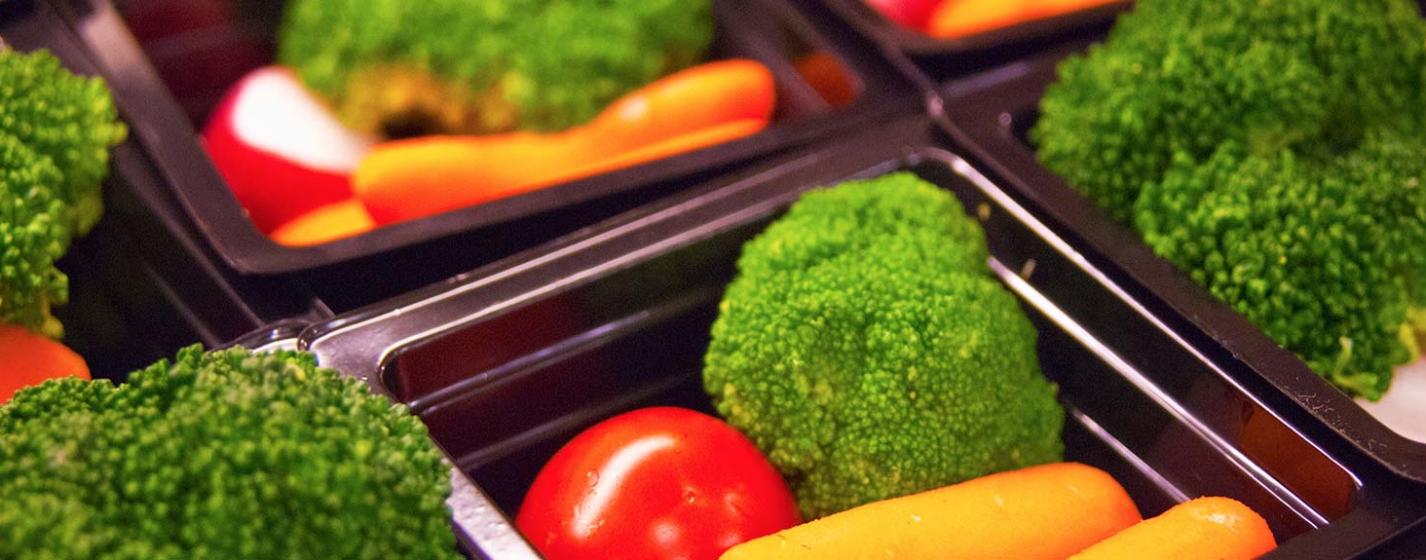USDA Activities and Partnerships

Select new and ongoing USDA food loss and waste reduction activities and partnerships
USDA is doing its part to help make preventing food loss and waste the first-best option for farmers, businesses, organizations, and consumers. A large number of USDA programs contribute to this objective, ranging from those supporting market and distributional efficiencies to those educating consumers about safe food storage. Selected new and ongoing activities and partnerships directly contributing to the reduction of food loss and waste are listed below.
Partnerships
In April 2019, as part of the Federal Interagency Collaboration to reduce food loss and waste, USDA, the Environmental Protection Agency (EPA) and the Food and Drug Administration (FDA) signed a formal agreement with ReFED, Inc. (ReFED). ReFED is a non-profit organization composed of a network of the nation’s leading business, nonprofit, foundation, and government leaders committed to reducing U.S. food waste. The purpose of the formal agreement is to leverage resources to evaluate what is and is not working with respect to the technical implementation of strategies aimed at reducing food waste in the U.S. Formal Agreement with ReFED (PDF, 783 KB). In September 2021, the MOU with ReFED (PDF, 374 KB) was renewed for an additional three years.
In October 2019, also as part of the Federal Interagency Collaboration to reduce food loss and waste, USDA, EPA, and FDA signed a formal agreement (PDF, 938 KB) with the Food Waste Reduction Alliance (FWRA). Through this partnership, USDA, EPA, and FDA will formalize industry education and outreach efforts with the Grocery Manufacturers Association (now the Consumer Brands Association), the Food Marketing Institute (now the Food Industry Association), and the National Restaurant Association, the three founding partners of the Food Waste Reduction Alliance (FWRA). The FWRA represents three major sectors of the supply chain: food manufacturing, retail, and restaurant and food service. The Alliance pursues three goals: reducing the amount of food waste generated; increasing the amount of safe, nutritious food donated to those in need; and diverting food waste from landfills.
On June 1, 2024, the three agencies renewed a Memorandum of Understanding (MOU) with the FWRA. This public-private partnership will explore actions to reach industry sectors, through efforts such as targeted industry resources, tools, and guidance.
Date labeling on food packages
Confusion over the meaning of dates applied to food products can result in consumers discarding wholesome food. In an effort to reduce food waste, it is important that consumers understand that manufacturers provide dating to help consumers and retailers decide when food is of best quality. Except for infant formula, dates are not an indicator of the product’s safety and are not required by federal law. With an exception of infant formula, if the date passes during home storage, a product should still be safe and wholesome if handled properly until the time spoilage is evident. To help consumers — and others — better understand the use and meaning of food product dating, USDA’s Food Safety and Inspection Service (FSIS) has issued a Fact Sheet on Food Product Dating. In addition to providing information the fact sheet also includes a recommendation encouraging food manufacturers and retailers that apply product dating to use the “Best if Used By” phrase to convey quality dates.
Innovation and Initiatives Within USDA
USDA has identified innovation as a major driver in increasing the reduction, recovery, and recycling of food waste. Innovation helps to make reducing, recovering and recycling food waste economically viable for businesses, organizations and households by increasing the feasibility or reducing the cost of better food waste management. Innovation can also help stimulate economic development and job growth by turning food waste into an economic opportunity. USDA’s Agricultural Research Service (ARS) supports innovation by conducting, often in collaboration with industry and academic partners, research on new technologies for reducing spoilage of fresh foods and the development of new products from waste materials at food processing facilities. This research stream, which is primarily conducted within ARS’s National Program on Product Quality and New Uses, is reviewed/renewed in five-year cycles, with the next cycle starting in 2020. ARS has launched the Scientific Discoveries 2020 website to highlight the national and international impact of ARS research on agriculture from the farmer's field to the consumer's table, and some of these innovations reduce food waste.
Read about other USDA innovations and initiatives that are reducing food loss and waste
- ARS report: Innovations for Reducing Food Loss and Waste (November 2024)
- USDA Blog, ARS Research Innovates to Reduce Food Loss and Waste: An Interview with Gene Lester | USDA, October 28, 2020
- USDA Blog, NIFA-Supported Research Innovates to Reduce Food Loss and Waste: An Interview with Robert Nowierski | USDA, January 12, 2021
- USDA Blog, USDA’s Foreign Agricultural Service Helps Global Efforts to Reduce Food Loss and Waste: An Interview with Paige Cowie | USDA, March 22, 2021
Measurement, research, and knowledge sharing about food loss and waste
USDA’s Economic Research Service (ERS) calculates and maintains the U.S. Food Availability data system, including the Loss Adjusted Food Availability (LAFA) data series. This data series was primarily designed to estimate daily per capita calorie availability and food-pattern equivalents of the five major food groups plus the amounts of added sugars and sweeteners and added fats and oils. These data support the widely cited estimates of food loss at the retail and consumer levels in the United States. In addition, ERS conducts research into the drivers and amount of food loss and waste at the farm level. USDA continues to update and refine these measurements and analyses.


